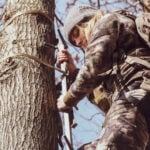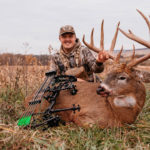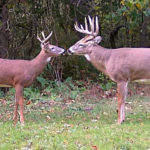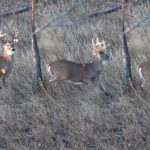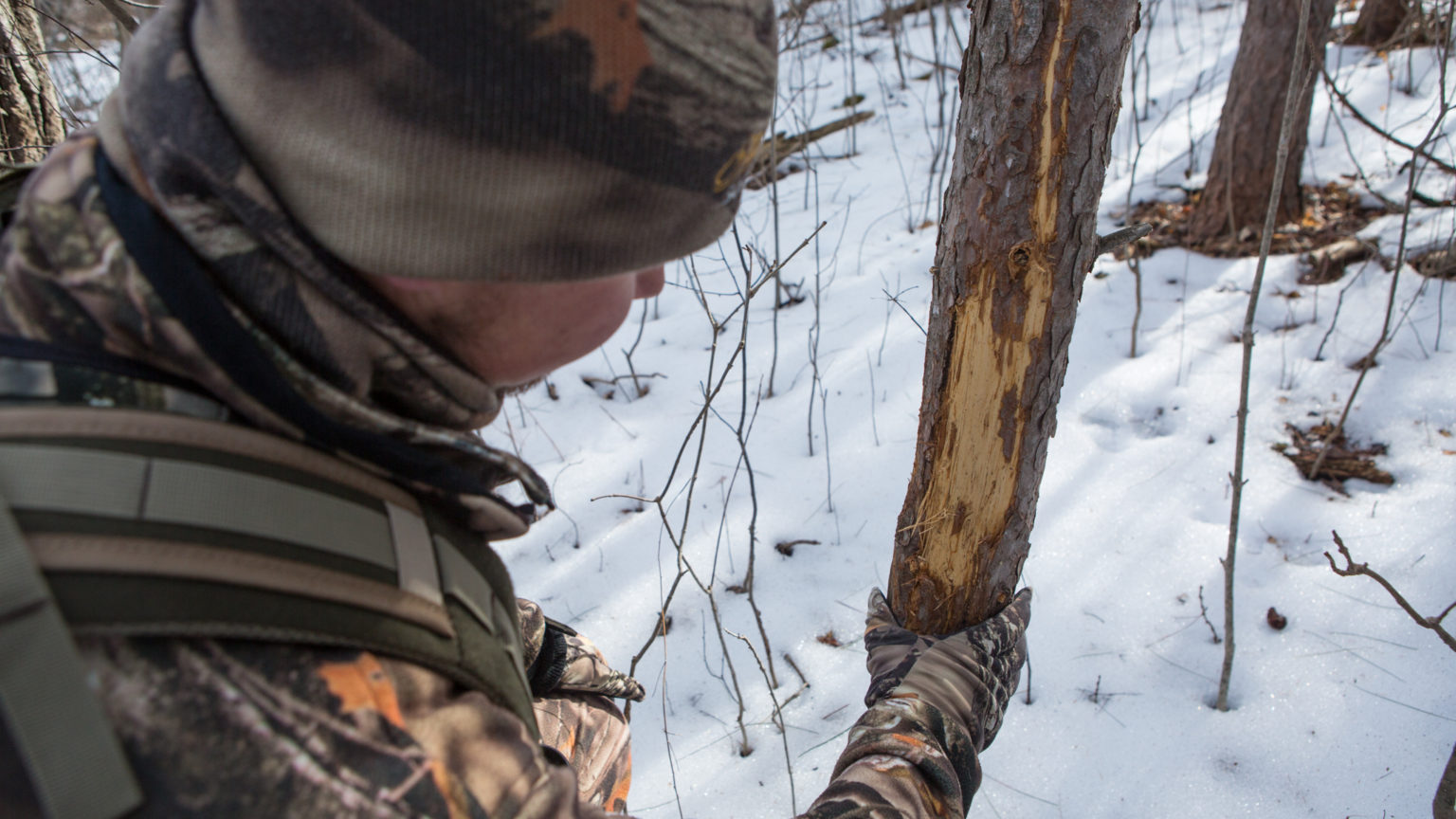
Slowly scanning the timber before me, my eyes became fixated on the large yellow-colored spot worn raw on the stout pine tree ahead; there was no missing the giant rub nestled into the heart of this tight bottleneck.
I could certainly tell this was the handiwork of a big, mature public-land buck. I followed the faint deer trail with the large tracks past the rub and on through the bottleneck into a tangle of greenbriar searching for a high point overlooking the hollow.
The vantage point I stumbled upon was covered in buck sign: big tracks and rubs were everywhere. It was a perfect bedding site for a mature buck, offering consistent winds and an excellent vantage point.
Ten months later found me hunting that very location for the first time on a rainy Halloween night. Just before dusk, movement caught my eye as a blocky body ghosted through the bottleneck leading from the high bedding vantage point.
I could plainly see tall tines coming my way; my heart raced as the buck closed the distance to 30 yards and a well-placed arrow ended a very successful public-land hunt.
I wish I could say all of my best stand sites were so easy to locate, but most hot stand sites are not just stumbled onto, but instead take a lot work to find and a well-laid out plan to execute.
I am going to discuss some of the strategies that I use to scout and ultimately pick my stand locations for pre-rut and rut setups.
First and foremost, it starts with studying aerial and topographical maps to learn the lay of the land and property boundaries. I search for points, saddles, likely locations for beaver dams any other terrain feature that could force the deer through an constricted area.
I set out for my maiden scouting voyage in the winter months, as it’s easier to see the past season’s buck sign the best at this time. The lack of foliage means you can see rubs, scrapes and licking branches from a distance as well as the runways and deer trails.
Another benefit of winter scouting is the absence of insects such as mosquitos, ticks and deer flies. They can really put a damper on a great day in the outdoors.
I consider a mostly sunny day in the mid 30’s to mid 50’s perfect scouting weather; you can walk all day with minimal layers on and stay very comfortable without overheating.
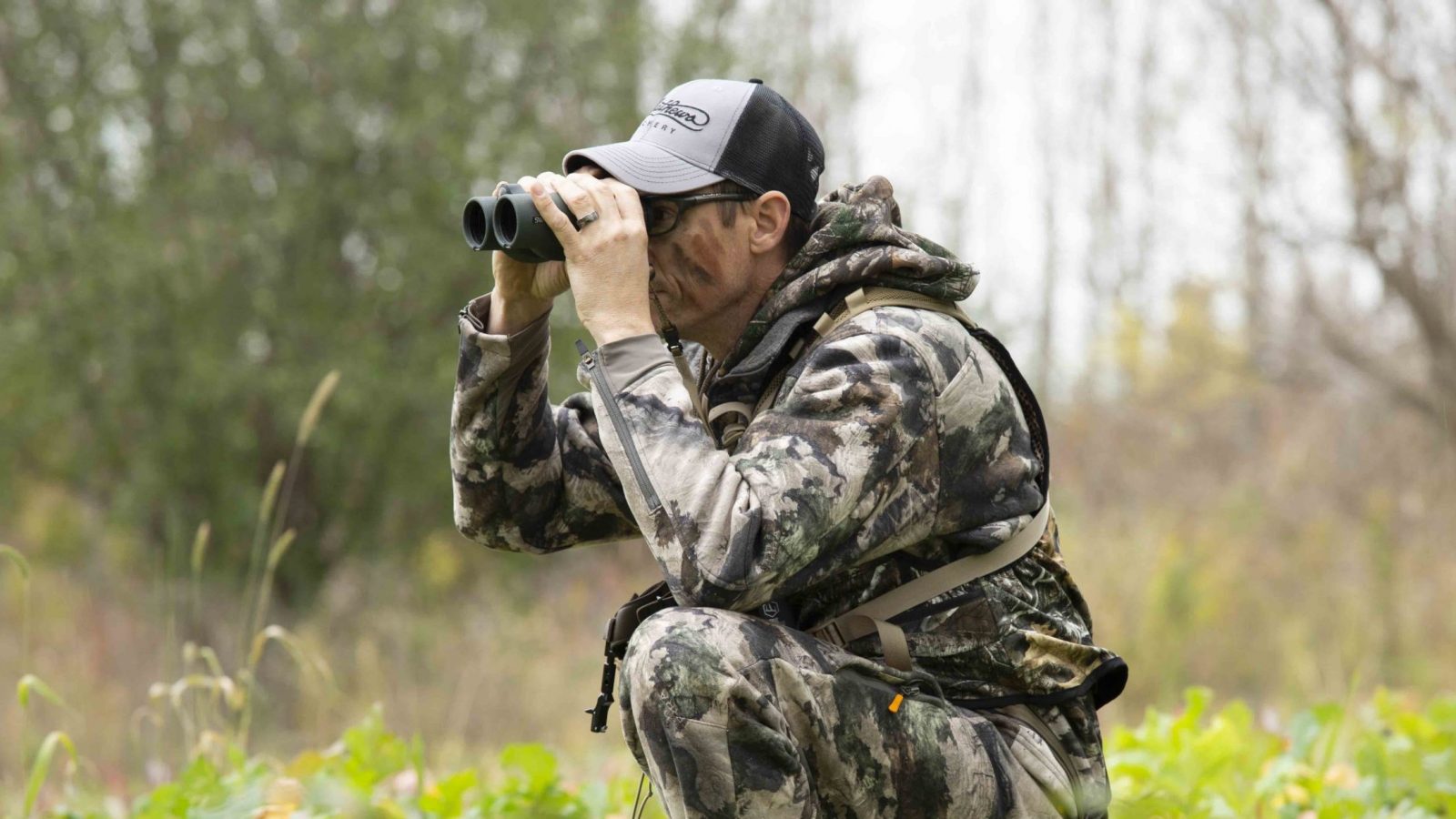
While winter scouting, I go slow and try to take in as much as I can in the areas of interest that I locate.
When I find an area that was hot with deer sign, I will circle the area on foot so I can look at it from different angles; you would be surprised what you see that you missed by only looking at it from one vantage point. I take an aerial map of the area with me on new properties and draw points of interest on it with a sharpie marker.
I will also take notes along my way in an attempt to not overlook anything when I later form my plan of attack. Once I have the area covered, I will use the information from my map and notes to determine whether this is an area I want to hunt or not.
This tactic may help relate some things I didn’t first notice once I have every thing plotted out on my aerial map. I can then see the big picture so to speak.
Large rubs are one of my favorite pieces of buck sign to find and look at. There is something about large, thrashed trees that raise the heart rate, and attempting to read the rub to find clues about the whitetail which left his mark gets me excited!
Deep gouges, tine marks on the brush or surrounding the rubbed tree and the height of the rub are all clues of the buck’s level of aggressiveness and age.
It won’t tell you if he scores 120 or 160 Pope & Young inches, but will at least give you some solid clues of the buck’s stature.
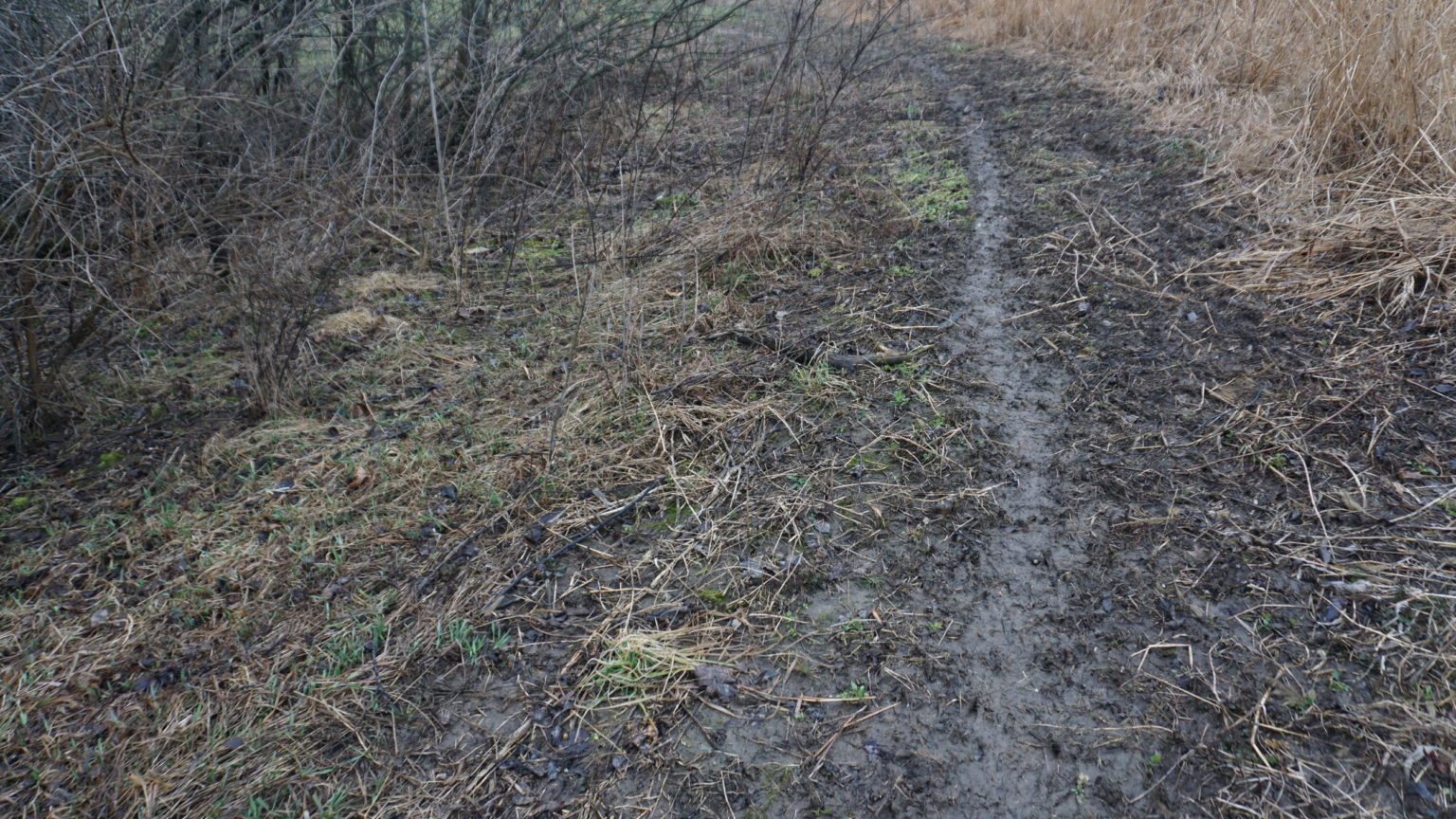
Large scrapes within the timber also command some attention. These are much more likely to have been made and visited during day light hours than the numerous field-edge scrapes you will find.
I will note field-edge scrapes but do not look very deeply into them. Scrapes are hit-or-miss in my experiences, and field edge scrapes are even less reliable. Trails along breaklines have made for some memorable hunts for me and I will always pay breaklines a visit when scouting.
The change in habitat is a magnet for cruising bucks. I define any whitetail sign that commands a closer look as a point of interest. In reality it could be a host of things the deer leave behind that would fall into “points of interest”.
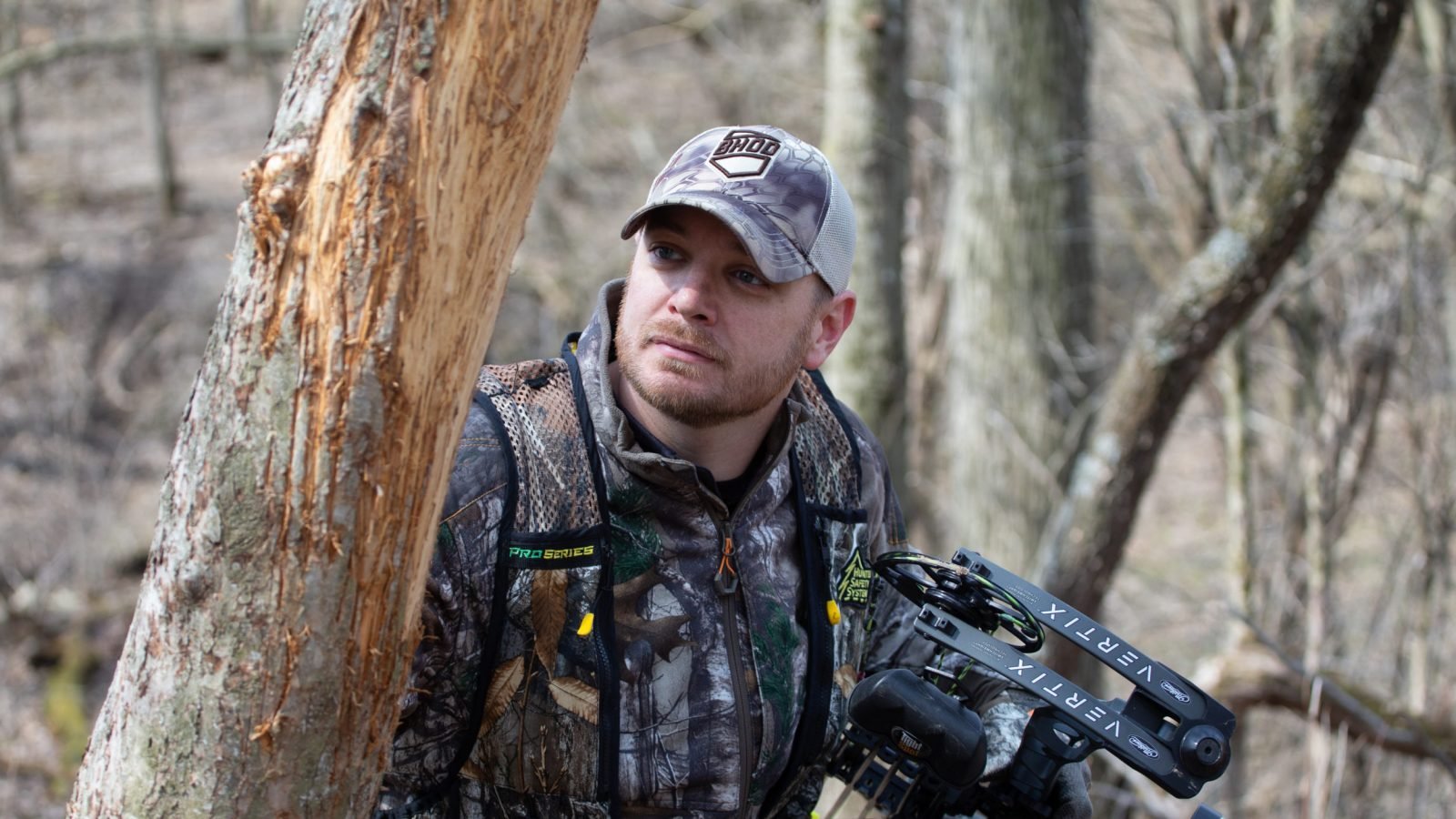
Now for the kicker: After I just stressed how important it is to find all of last years hot big buck sign, I put most faith into the terrain and not so much on the deer sign I located.
Deer can and will roam most anywhere — especially under the cover of darkness, so sign basically only tells me there is/was deer in the area and to a degree the potential number and size (based on track and rub size) of the bucks in the immediate area.
After going over the property and marking all my points of interest and all the terrain features I located, I move onto the key decision of choosing my setups.
This is when I take everything I saw and noted (terrain and buck sign) and try to relate it to a common place in my set of woods. It could be an inside field corner, creek crossing, or some sort of a bottleneck.
Once I can relate and tie as many of these different areas of interest to a couple specific terrain setups, I know I usually have a hot spot for late October thru the end of November.
I feel by doing this I am putting myself in a “common denominator” of the particular set of woods I am hunting by tying these areas together. I will then set stands or prime the areas I found for use with my climber.
If it is all possible I will clear small shooting lanes for a couple different trees in the area to take advantage of the different wind currents and thermals.
I would rather have too many stand sites ready to hunt than not enough. This is only the start, however; I will let stand time and observations I make dictate the fine tuning of my future stand placements.
Don’t be stubborn and refuse to fine-tune your setups. If I watch a big buck skirt me once, that is a tough break. If I watch him do it twice because I didn’t act on it…. well, that is tough to swallow and the blame for the missed opportunity can only rest one place: my shoulders.

